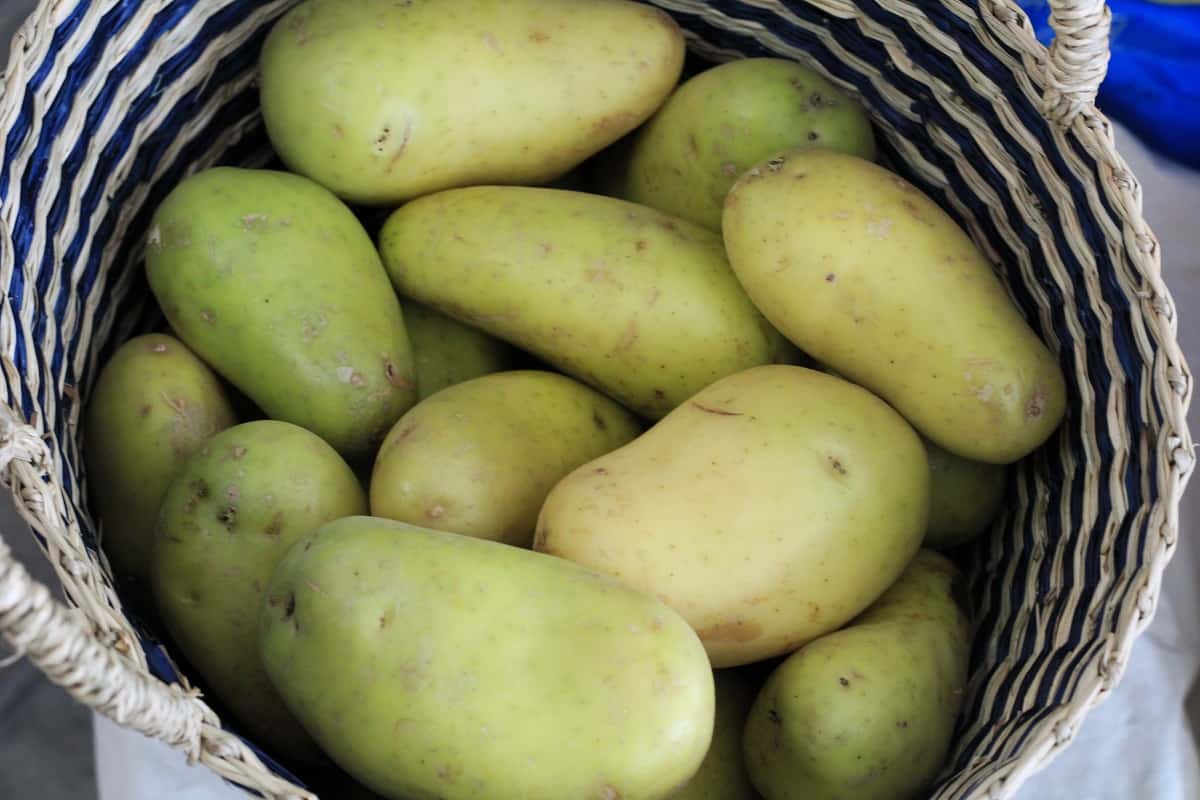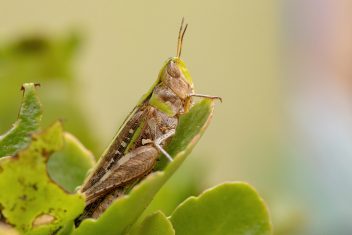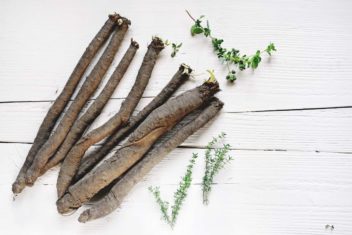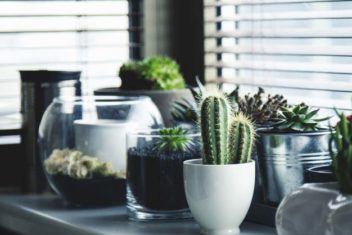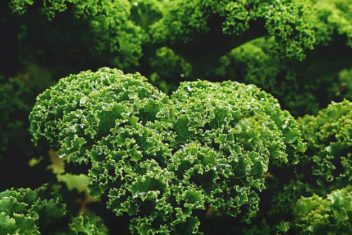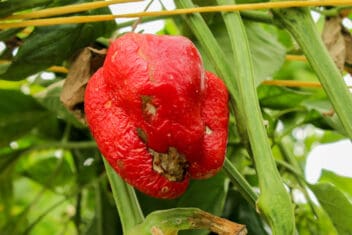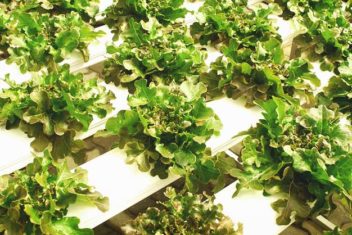When I harvested my potato crop just a week or so ago, I was dismayed to see that some of them had chunks taken out of them – presumably, by hungry little rodents.
That’s something that I always find so frustrating to deal with. Unfortunately, it’s just part of having a garden. You’re going to have pests now and then, and you just need to do your best to learn from your mistakes the next year.
If that’s the biggest problem I have with my potatoes this year, I’ll be happy. I’ve had some years where the entire crop I harvest turns green, either before I even get the chance to harvest them or after, in storage.
There are a few reasons why potatoes turn green – but if you’re wondering what to do with green potatoes, you aren’t alone. Here are a few options – as well as some tips on how to stop this tragedy from happening in the future.
Why Do Potatoes Turn Green?
Potatoes can turn green for several reasons.
More often than not, they go green when they aren’t stored properly and receive some sort of light in the process. If you leave potatoes out on your kitchen counter, they’ll go green in a matter of weeks.
Potatoes turn green as they form chlorophyll – not necessarily harmful in and of itself. However, this also indicates the presence of toxins.
You may notice that your potatoes turn green before you even get the chance to harvest them. This is because, again, they were exposed to too much light. If it was an overly hot or sunny growing season or you forgot to hill your potatoes, this is likely why.
Planting potatoes too close together can also lead to them becoming green since it pushes them up out of the soil as they compete for space.
Can You Eat Green Potatoes?
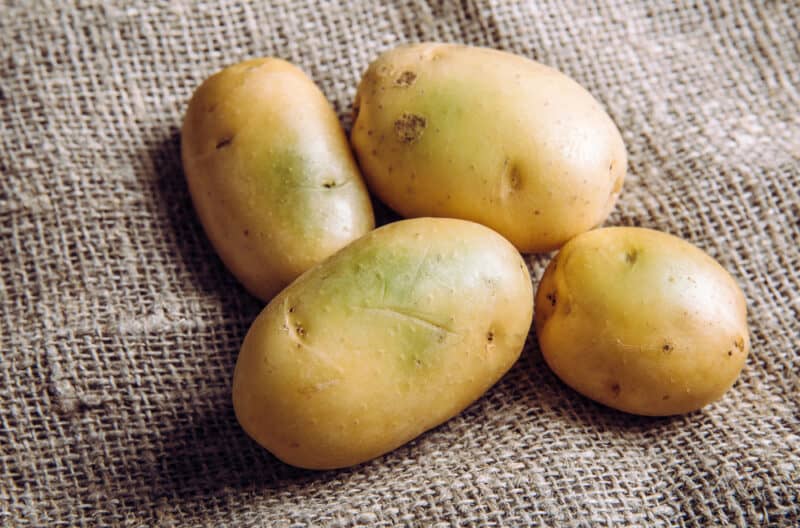
Now that you know why potatoes turn green, you might be wondering if they’re safe to eat.
1. Chlorophyll Production vs. Solanine
Here’s the bad news – green potatoes are poisonous. When a potato has been exposed to light, the skin will turn green, indicating the presence of the pigment chlorophyll. The plant is trying to harvest the light, hence the chlorophyll.
Chlorophyll is tasteless and not dangerous, the chlorophyll present in the green part of the potato is not an issue.
The issue lies in the fact that the “greenness” indicates another chemical lurking – a substance named solanine.
Solanine is a toxic substance formed naturally in potatoes and related plants. It helps ward off animals and insects and is found in all parts of the plant, including the roots, sprouts, flowers, fruits, and leaves.
2. The Effects of Solanine
When ingested, solanine is very bitter and unpleasant-tasting. It can cause stomach symptoms like diarrhea and vomiting. Death and extreme illness have been reported in some cases, too.
Fortunately you should not be too worried, as it takes a lot of solanine to make you ill. You’d have to eat more than just one potato to feel the effects. So if you accidentally eat a small piece of green potato without realizing it, you’re most likely going to have no problems at all. One study found that a 100lbs person would have to eat an entire pound of all-green potatoes to get sick.
The big problem you’ll have, though, is that the one bite is going to taste absolutely horrible.
Green potatoes are not great to eat. They will taste bitter and unpleasant, likely turning you off from eating the rest of the potato.
You probably won’t eat enough of a green potato to suffer from any problems. However, it’s important to note that the sprouts that appear on potato plants also contain high levels of solanine. The purpose of this is to protect developing growth and provide a new supply of solanine to a developing plant.
Therefore, even if your potatoes aren’t green, it’s a good idea to remove any sprouts you find for you to consume or cook.
Here’s another fun fact – potatoes can have increased solanine even if they aren’t green. If they are damaged, diseased, stored under too-warm temperatures, or even experience a spring frost during their growth, they might be high in solanine and have a bitter taste.
What to Do With Green Potatoes
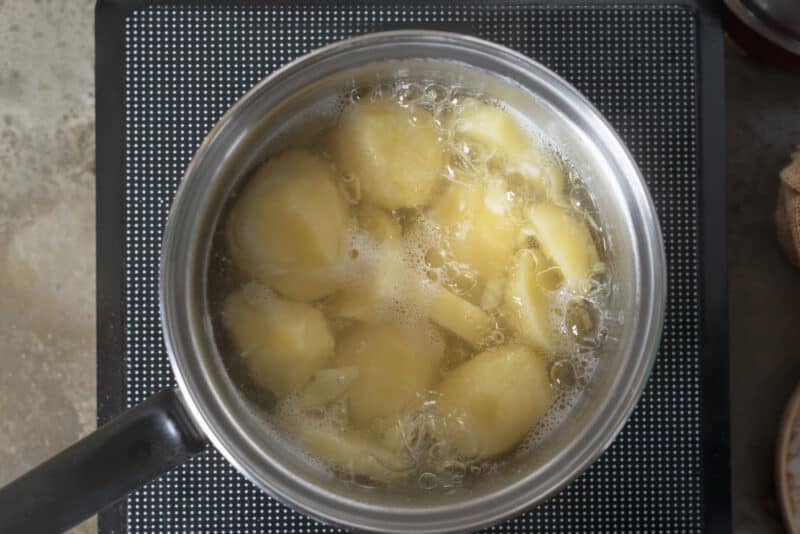
Whether you just harvested a bunch of green potatoes and aren’t sure what to do with them or have stumbled upon a batch in your root cellar, here are a few ways you can use up your green potatoes.
1. Cook and Eat Them
In many cases, you can still cook and eat the potatoes as you normally would.
However, the key here is to make sure you cut and peel around the areas that have turned green. This might mean sacrificing the majority of the potato. Removing all the green areas will eliminate most of the bitterness.
If you notice that the potato is green even beneath the skin, throw it out. This can be harmful.
Some people might tell you that you can still eat the green potato as long as you boil it, cooking it at a high temperature for a long time. The solanine still exists after this, so don’t risk it.
2. Composting
Composting green potatoes is another solid option. The solanine poses no risk when it’s in a compost pile, so toss your potatoes there. You may have to cut them into smaller pieces first to expedite the process of decomposition.
3. Seed Potatoes
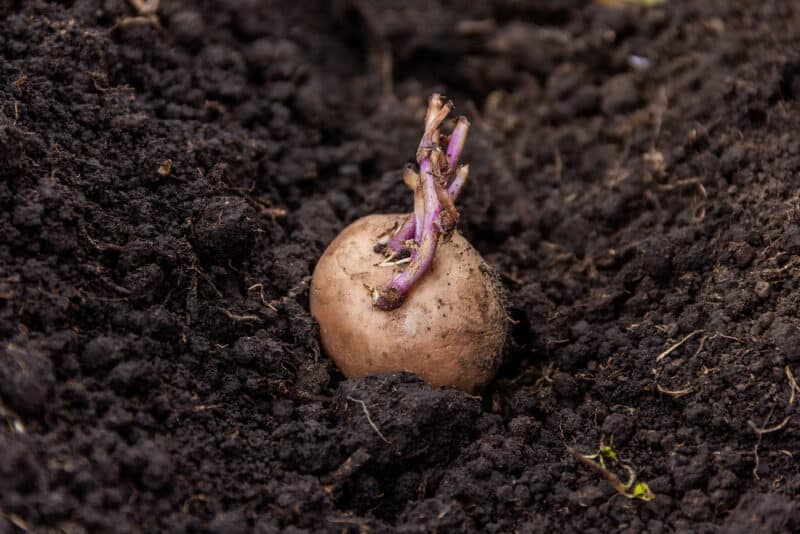
If you can wait long enough before it’s time to plant again (without your potatoes rotting), you may be able to use the sprouts (the eyes) as seed potatoes.
Just keep checking them to make sure they don’t rot before planting time.
4. Don’t Feed to Livestock
Animals, especially creatures like pigs and chickens, are incredibly helpful on the homestead. They can help convert kitchen waste into meat and eggs, making us feel less guilty about having to throw out food.
Unfortunately, green potatoes aren’t foods you should be feeding your livestock. They can make your animals just as sick as they make us.
How to Prevent Potatoes from Turning Green
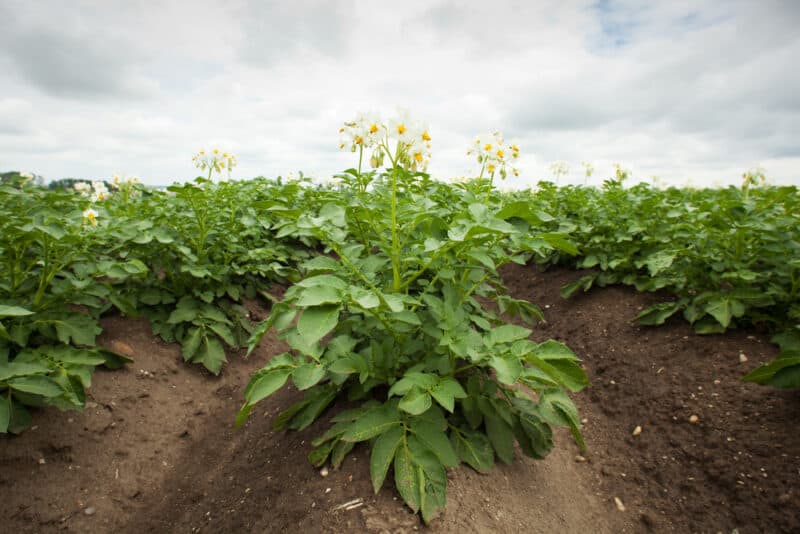
Now that you know why your potatoes turned green and why they probably aren’t the best to eat, it’s time to cut your losses and get rid of the ones you have.
You also need to make plans for the future. Here are some tips.
1. Plant at Proper Depths
One of the most common reasons why potatoes turn green is because they were not planted at the proper depth.
Ideally, you should be planting your tubers at about 4-6-inches deep. This will help protect the potatoes from the potentially harmful rays of the sun.
2. Hill Your Potatoes

When you plant next year, make sure you take the time to hill your potatoes. Ensuring that sufficient soil is mounded around each plant will help protect the tubers from the sunlight.
The process is referred to as hilling because you will build a small hill around your plant to cover the developing tubers. You’ll find that the height is naturally reduced throughout the season by rain, which is why you need to either make tall hills or keep re-hilling them.
Otherwise, the potatoes will grow too close to the surface of the soil.
3. Store Properly and Avoid Light Exposure
When you get your potatoes into storage, make sure you keep them properly cured (the skins should be impenetrable by your fingernail) before you put them away. Keep them in a cool, dark location away from other storage crops like apples or onions.
Make sure you eliminate the exposure to artificial light, both during the harvesting process and while the potatoes are being stored. This is one reason why a root cellar makes such a great place to store your potatoes.
Store potatoes in a location with good air circulation and high humidity. The ideal temperature will be at 45-50°F with up to 95% relative humidity and total darkness. These conditions often aren’t found in the typical home, but do your best to get the potatoes as close to these conditions as possible.
Keep the potatoes away from areas that give off heat, like near a refrigerator, stove, or dishwasher. You can stash the potatoes in a paper bag if you plan on eating them soon.
Remember that stressors such as heat, cold, light, or injury to the tuber will encourage the production of solanine – so exercising caution during the harvesting process can help boost your yields, too.
Red and White Potatoes are Great – Green Potatoes Are Not!
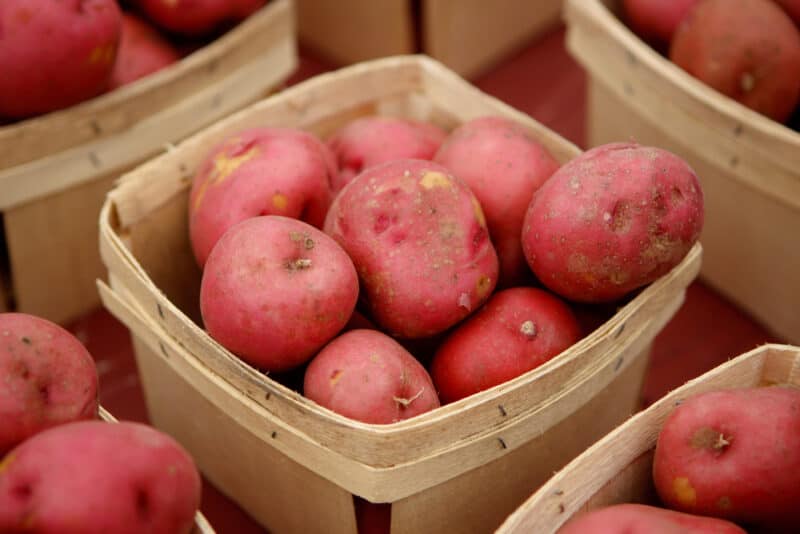
When you’re choosing which types of potatoes to plant in your garden, it may help to know that red potatoes are less likely to turn green than white ones.
Of course, this is only if you are following all the preventative steps mentioned above.
When you harvest, remember that red and white is good – green is bad! Toss out those green potatoes and save only the best for eating.
Happy harvesting!
